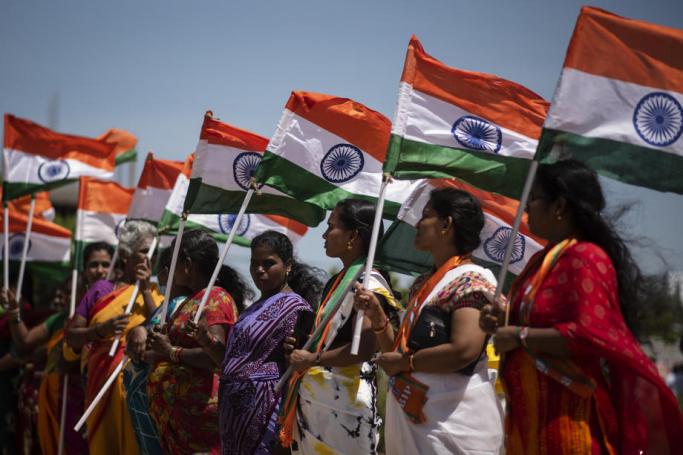(Commentary)
India celebrated its 75 years of Independence this week with pomp and gaiety as a nation that is going to be watched by the world for its ambition to become the “teacher of the world” (Vishwa guru).
However, there are challenges in terms of maintaining cultural, ethnic and religious diversity, as envisaged by its founders
Increasingly the country is identified with majoritarian politics that has created apprehension in terms of its pluralistic ethos cultivated over decades, particularly among minorities. The Government has to take extra efforts to dispel this impression.
The campaign ‘Har Ghar Tiranga (Tricolor national flag on every housetop) has evoked patriotism among citizens with unprecedented proportions with an estimated 300 million national flags unfurled across the country.
Prime Minister Narendra Modi spoke for over 90 minutes on 15 August from the Red Fort, the official venue for the celebrations, elaborating the achievements, challenges and future outlook for the country. He spoke of respect and fair treatment of women, gender equality goals, unity and commitment to the country, and instilling a sense of duty among citizens. He urged people to focus on the five resolutions to make India a developed nation – removing every trace of bondage, taking pride in its heritage and unity, and fulfilling the duties of citizens over the next 25 years.
Combating corruption, nepotism in political economic spheres was also highlighted by Modi. Plurality of the country has been particularly emphasized.
India is a complex country of 1.3 billion people with a multitudes of challenges. It remains united, keeping at bay secessionist elements with various measures including negotiations, special concessions and bringing a sense of nationhood among the diverse population.
However, there are significant gaps in its achievements in economic and political governance. India’s potential can be realized only if these challenges are addressed comprehensively.
The country has completed 75 years with appreciable progress in economic and social upliftment of large masses of the population. Its poverty reduction efforts, growth and development, and improvements in human development indicators are impressive, though there are gaps to be addressed with concerted investments in sectors like education, health, water and sanitation and basic needs. Economic opportunities have to be expanded for the increasing numbers of young people.
The development path that India chose in early decades of Independence led to strengthening the capital goods sector wherein the heavy industries received a push as did work to develop infrastructure in areas like irrigation that augmented agriculture self-sufficiency. The public sector played a crucial role for India’s ascendancy during that period.
Politics of welfare and poverty reduction also played significant role in addressing basic needs and India has been able to overcome famines and food shortages in a significant way as a young democracy during the 1960s to 1980s.
However, investments in education, health and other social development sectors have been inadequate and the result has been low human development, though per capita income has increased significantly over the years.
Neo liberal policies and privatization since 1980s saw impressive growth rates of the economy and so also increasing inequality. Low skilled, low productive informal sector and declining women’s participation in the labour force are challenges that need to be addressed through policy initiatives.
These are some challenges that the current and future governments face in terms of addressing the economy and society, setting the country on a sustained growth path and benefiting from the demographic dividend of a young population who seek remunerative employment and finally building a united country with peace and tranquility.
Author: Anonymous
The views expressed here do not necessarily reflect the views of Mizzima Media.












